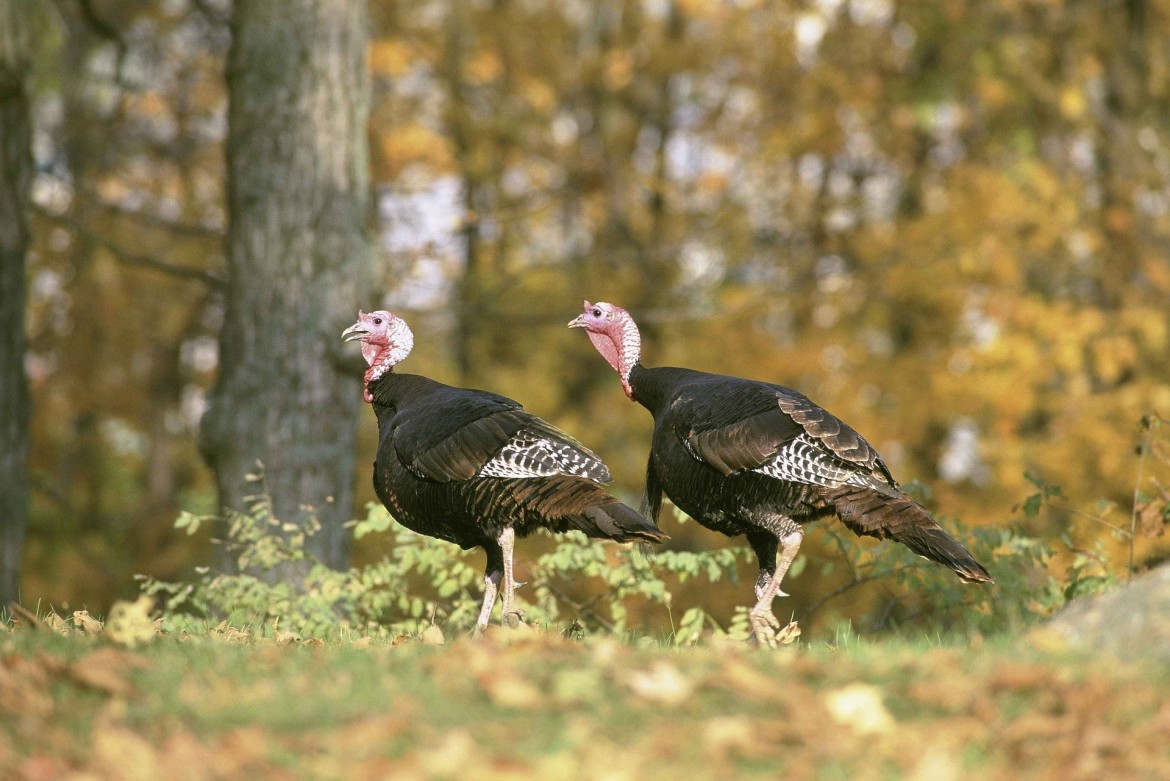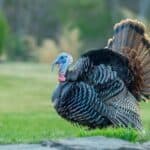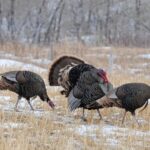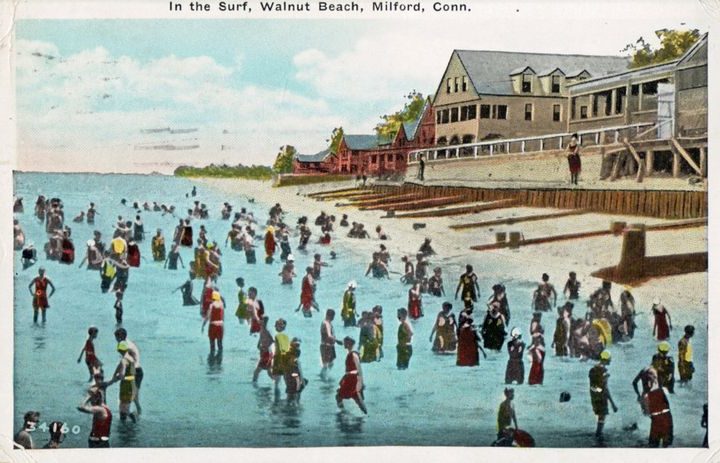
Why did the chicken cross the road? To make way for the turkeys!
Meleagris gallopavo, more commonly known as the wild turkey, has
once again become a common sight in Milford. Silver Sands State Park
is home to dozens and dozens of these curious fowl.
The gobblers are right at home in neighborhoods all around town, toddling across
streets, following their flocks, pecking about fields and backyards.
When Milford was settled in the early 1600s, turkeys were abundant and
a favorite fare of the founding fathers. “Forests were cleared by the
settlers in order to create fields for planting,” said Tim Chaucer,
director of The Milford Marine Institute. “Agricultural use of the
land led to the loss of the turkey habitat, and their numbers
plummeted.”
 Turkeys were the first domesticated animals in the new world as Native
Turkeys were the first domesticated animals in the new world as Native
Americans kept flocks. Ships returning to Europe were keen to
introduce these meaty birds to their homelands, further reducing their
numbers. By the 1800s nary a turkey could be found in the state.
Attempts were made to repopulate the species beginning in the 1950s
through early 70s, but were unsuccessful. Later efforts of relocating
turkeys throughout the state showed more promising results. “The
increase in open space and reforestation has given the turkeys a place
to roost,” explained Chaucer. “Wooded areas are the favored habitat
for the birds and their numbers improved.” In fact, according to the
Connecticut Department of Energy and Environmental Protection (DEEP),
turkeys have been sighted in every town in the state—all 169 of them!
Though they may appear awkward, turkeys are actually quite agile
creatures. Quick on their feet, turkeys can run a quick sprint at
speeds of 10-20 miles per hour. Flying to treetops at night to roost,
they can fly as fast at 55 mph for a short distance.
 Milford’s turkeys are omnivorous, eating plants and small animals.
Milford’s turkeys are omnivorous, eating plants and small animals.
They forage for hard nuts like chestnuts and acorns, enjoy a variety
of wild berries and roots; they also eat leaves and grasses. Insects
are a favorite food of these fowl. They have also been known to
consume small frogs, snakes, and reptiles. Essentially they will eat
just about anything in the woods. With their diverse appetites they
can thrive in small wooded areas, feeding in the early morning and
late in the afternoon.
The big tom turkeys (males) can grow to weigh up to 25 pounds. Hens
(females) generally weigh around half that amount. As breeding begins
in March, the tom’s gobble for attention and put on a dazzling display
of their trademark tail feathers in an attempt to impress the hens.
The hens lay as many as fourteen eggs that hatch in about a month.
Poults (chicks) will stay alongside their mothers throughout the
summer, autumn, and winter before moving on to other flocks.
As tame as they may seem, approaching a wild turkey is not
recommended. They are sizeable birds with clawed feet around six
inches across, and their beaks are strong and quick. Incidents of
people pecking are uncommon, but it is best to err on the side of
caution.
Our fellow residents, the wild turkeys don’t seem to mind our
presence. Crossing streets, stopping traffic, and spending time in our
yards, these fascinating birds make affable neighbors.
—Susan Carroll-Dwyer




